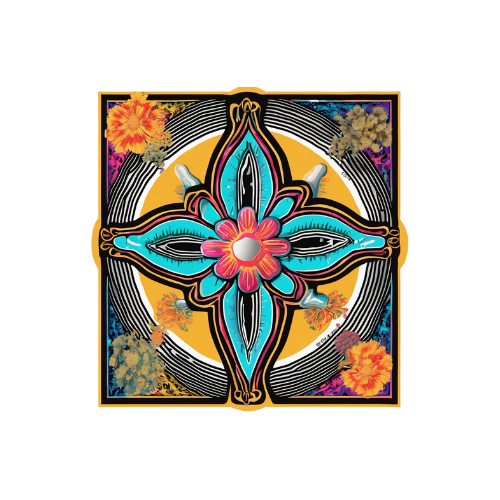Notifications
B+
Abstract
Psilocybe cubensis ‘B+’ is one of the most cultivated and recognizable strains of this psychoactive species, celebrated for its large fruiting bodies, caramel-brown caps, and reputation for resilience across varied cultivation environments. Favored by beginners for its forgiving nature and robust yields, B+ is widely cultivated on a range of substrates and demonstrates a consistent capacity to produce full, dense flushes. This entry examines the strain’s morphological characteristics, spore profile, developmental behavior, and optimal environmental parameters, with emphasis on its versatility in both traditional and modern cultivation techniques.
1. Introduction
The B+ strain of Psilocybe cubensis has achieved widespread popularity in the mycological community due to its adaptability, substantial fruit size, and consistent performance in diverse climates. Often recommended to novice growers, B+ exhibits a wide phenotypic range but reliably produces dense flushes of large, aesthetically striking fruiting bodies. While genetically similar to other P. cubensis strains, B+ is characterized by specific visual markers and its ability to thrive under a broad spectrum of environmental and nutritional conditions.
2. Gill Formation
B+ exhibits medium to broad gills, moderately spaced and typically adnate to adnexed in attachment. Gill coloration progresses from pale greyish when young to dark purplish-brown as spores mature. The fertile hymenium forms a prolific layer supporting abundant spore production throughout maturation.
3. Microscopy and Spore Morphology
Basidiospores are ellipsoid to subellipsoid, smooth-walled, and dark purplish-brown in deposit. Typical dimensions range from 7–12 µm in length. Spore prints are dense, easily obtained, and exhibit the characteristic deep purple-black coloration of P. cubensis. Clamp connections are commonly observed within hyphal networks, and hyphae exhibit a monomitic structure.
4. Macromorphology
4.1 Cap (Pileus)
Caps typically range from 50–100 mm in diameter, displaying a convex to broadly umbonate shape in maturity. Young caps exhibit a rich caramel to golden-brown coloration, often fading to a paler buff or yellowish hue as they age or upon drying. Surface texture is smooth and may exhibit hygrophanous properties.
4.2 Stipe (Stem)
Stipes are robust, measuring 100–200 mm in height, cylindrical, and white to off-white. Characteristic blue bruising appears upon handling, indicative of psilocin oxidation. Young stipes are solid; older or larger specimens often develop a pithy or hollow interior. Partial veils are typically present and leave an annular zone as remnants on the stipe.
4.3 Performance Characteristics
B+ demonstrates moderate colonization speed and high resilience to variable conditions, making it suitable for a wide range of cultivation techniques. It performs well in both PF Tek and grain-to-bulk methods, with consistent yields across successive flushes. B+ is notable for its capacity to produce particularly large fruiting bodies under optimal hydration and environmental control.
5. Nutritional Substrates and Cultivation Conditions
5.1 Primary Substrates
B+ demonstrates excellent adaptability to a variety of lignocellulosic substrates.
- Brown Rice Flour (BRF) + Vermiculite (PF Tek):
- Accessible for beginners with reliable results.
- Provides starch-rich substrate with moisture-retentive vermiculite.
- Grain Spawn (Rye Berries, Wild Bird Seed, Millet):
- Supports rapid colonization and vigorous mycelial expansion.
- Ideal for spawning into bulk substrates.
5.2 Bulk Substrates
B+ thrives on nutrient-rich, well-hydrated substrates.
- Coco Coir + Vermiculite + Gypsum: Common, effective bulk mix.
- Manure (Cow or Horse): Enhances density and size of fruit bodies.
- Straw: Supplementary to coir or manure for improved structure.
- Compost: Viable but variable, requiring careful pasteurization.
5.3 Additives and Supplements
- Gypsum (CaSO₄): Improves substrate texture and calcium content.
- Bran, Soy Hulls: Used sparingly to enhance nitrogen availability.
- Worm Castings, Coffee Grounds: Optional additives to boost nutrients but increase contamination risk.
6. Fruiting Parameters
- Colonization Temperature: 75–81°F (24–27°C)
- Fruiting Temperature: 70–77°F (21–25°C)
- Relative Humidity: 85–95% RH during fruiting
- CO₂ Levels: Lower concentrations favor pinning; frequent fresh air exchange recommended
- Light: Indirect light (12/12 photoperiod) assists orientation and primordia formation; light quality is non-critical but beneficial
7. Summary
B+ is a highly adaptable Psilocybe cubensis strain, distinguished by its caramel-brown caps, robust stipes, and ability to produce exceptionally large fruiting bodies under optimal conditions. Its forgiving nature and broad compatibility with substrates make it a preferred choice for cultivators ranging from novices to experienced mycologists. Whether grown on simple BRF cakes or supplemented bulk substrates, B+ consistently delivers strong, reliable flushes with significant biomass potential when environmental factors are properly maintained.
